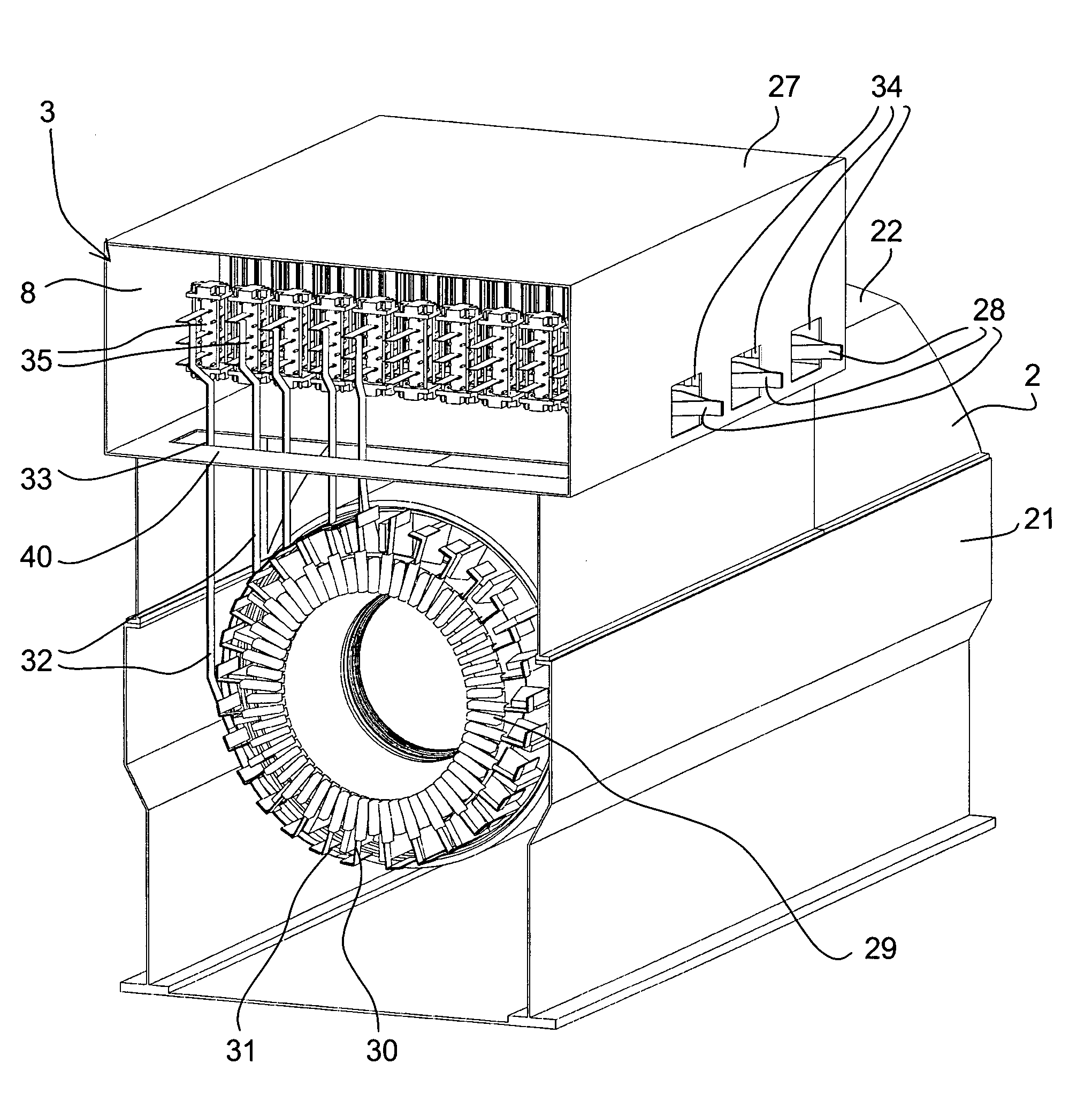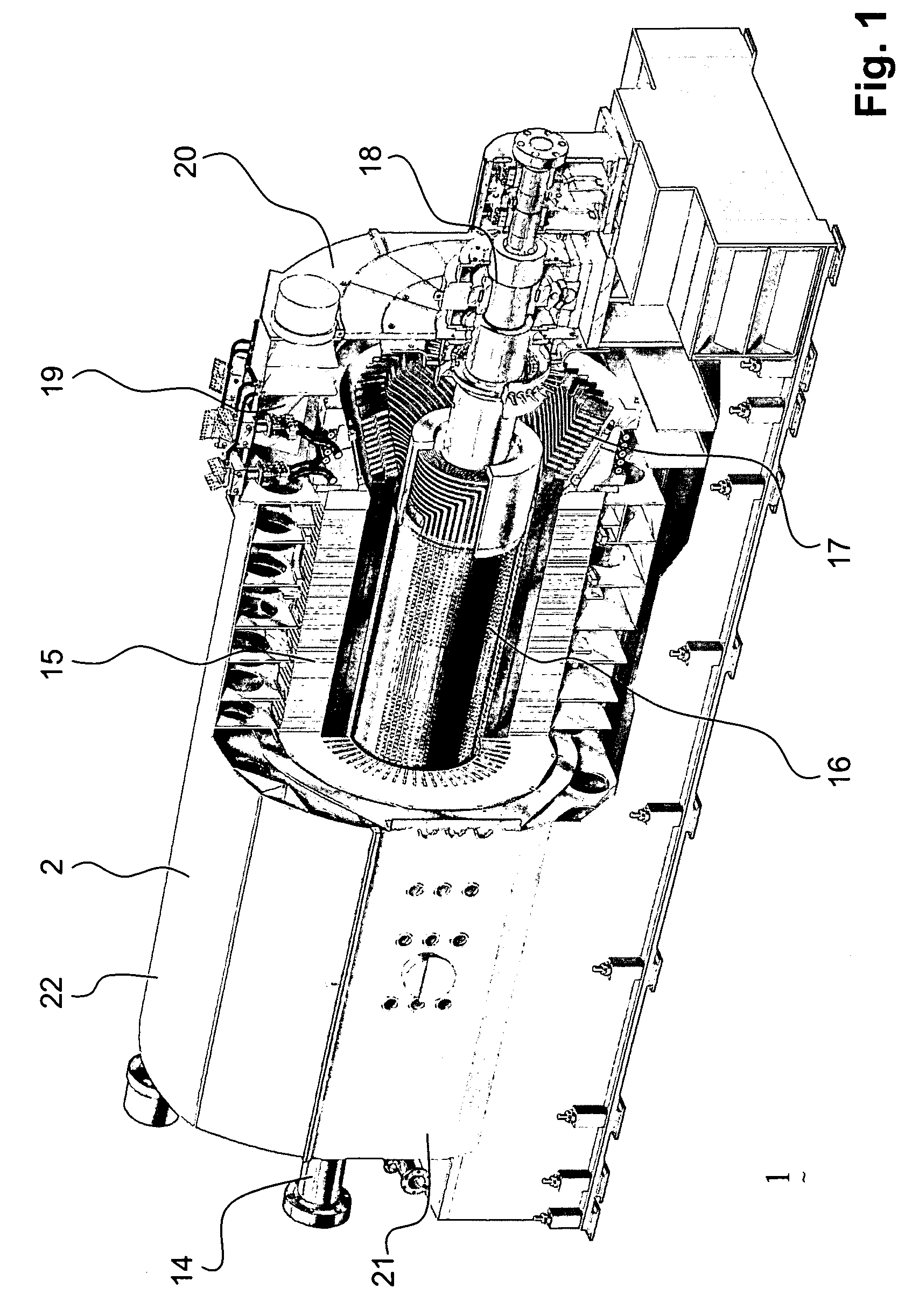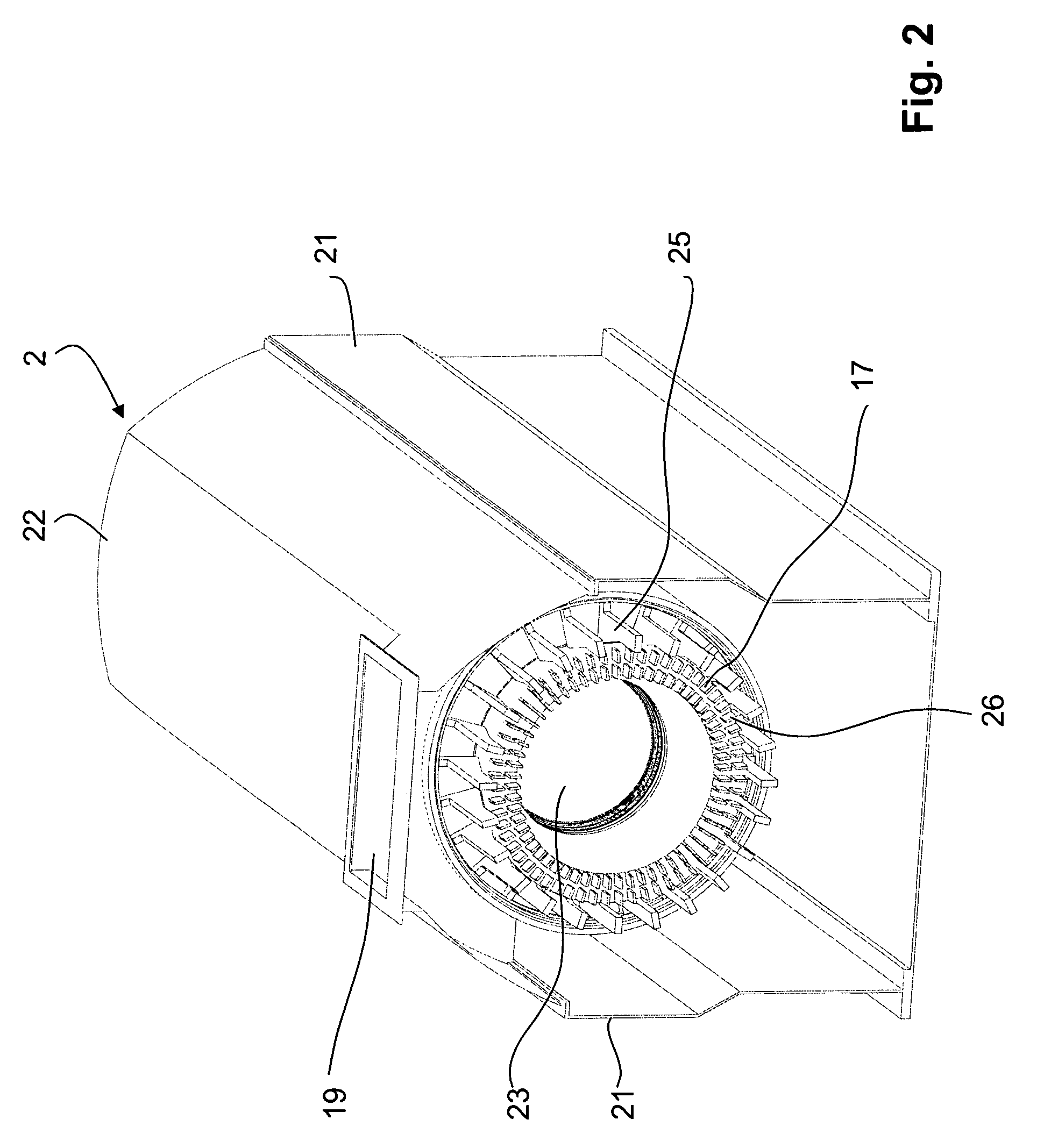Electrical machine with electronic power unit for conversion
a technology of electronic power unit and electric machine, which is applied in the direction of dynamo-electric components, dynamo-electric components, and control/drive circuits. it can solve the problems of limiting the achievable frequency range to 0-13 of the input frequency, increasing the rotary speed of the turbine, and increasing the size and cost of the equipment. it can reduce the number of necessary components, reduce the number of thyristors, and save spa
- Summary
- Abstract
- Description
- Claims
- Application Information
AI Technical Summary
Benefits of technology
Problems solved by technology
Method used
Image
Examples
Embodiment Construction
[0056]Referring to the drawings, which are for the purpose of illustrating the present embodiments of the invention and not for the purpose of limiting the same, FIG. 1 shows a generator 1 according to the state of the art, in which a stator 15 is mounted in a housing 2. In the bore of the stator the rotor 16 of the generator is mounted, wherein the rotor is carried by bearings 18, located on both sides of the stator. The rotor 16 extends into a shaft 14, and on one side the shaft 14 is coupled to, for example, a turbine providing the mechanical energy for rotation of the rotor.
[0057]On each terminal side, the stator includes free stator-windings, the end-windings 17, and the output current of the stator generated due to the rotation of the rotor is guided to the grid by first collecting it by the so-called phase rings or circular rings and by then guiding the current out of the housing via the top opening 19.
[0058]The housing is generally of elongate shape and includes sidewalls 21...
PUM
 Login to View More
Login to View More Abstract
Description
Claims
Application Information
 Login to View More
Login to View More - R&D
- Intellectual Property
- Life Sciences
- Materials
- Tech Scout
- Unparalleled Data Quality
- Higher Quality Content
- 60% Fewer Hallucinations
Browse by: Latest US Patents, China's latest patents, Technical Efficacy Thesaurus, Application Domain, Technology Topic, Popular Technical Reports.
© 2025 PatSnap. All rights reserved.Legal|Privacy policy|Modern Slavery Act Transparency Statement|Sitemap|About US| Contact US: help@patsnap.com



